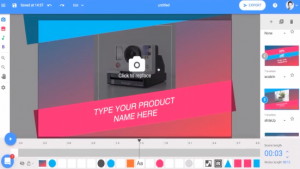Today, e-commerce is growing at a rapid rate. The pandemic situation has further accelerated the pace of digital transformation in retail, with many brick and mortar stores venturing into online commerce as well. As evident, a growing market also indicates growing competition amongst retailers, and the best way you can stand out in the crowd is by improving customer engagement on all your e-commerce platforms.
Customer Engagement in E-Commerce
Customers spend money on what they want. But, they are also ready to pay more if it comes with better service. No wonder, customer experience has emerged as the prime differentiator in e-commerce, valued over price and product.
If you wish to boost your sales or think that your e-commerce store isn’t hitting the numbers that you envisaged, here are five proven strategies to improve sales via better customer engagement.
1. Define Your Value Proposition
Your customers don’t have infinite time. They instantly need to know what they will get out of your product and are not going to skim your page to find out. Put simply, customers need a reason to buy from you, and it falls upon you to highlight this reason (your unique value proposition) explicitly.
For example, notwithstanding your company’s size or vintage, there’s likely to be at least one more firm selling the same or similar product or service. But why should customers choose you? Is it because you offer superior customer service, or do you have a unique subscription model?
We suggest thinking out of the box to boost your sales with a unique value proposition, like an affiliate program, bundled packages, exclusive subscriptions, etc.
In addition, make use of well-written and informative product descriptions on your e-commerce store to guide the users better. If your product is a technical one, you may also regularly share educational content to enable users to get more value out of it.
2. Encourage User-Generated Content
Modern customers demand personalization and don’t want to be treated like numbers. Thus, it is crucial to listen to them to make them feel heard and more connected to your brand.
A straightforward idea is encouraging users to leave reviews or ratings on your site. User-generated content for e-commerce includes product reviews, photographs of your products by verified users, comments, etc. This will showcase your openness to feedback and also impress site visitors when they see real people using and praising your products.
However, making customers talk is only the first part. If you want to engage users, you must make it clear that you are listening by responding to comments and also taking action on them.
3. Offer Real-Time Support Via Live Chat
Integrating Live Chat Software into your e-commerce site can offer several advantages:
- It is convenient for customers, who no longer have to wait to connect to call center agents for resolving their queries
- Immediate responses make it easier to make a purchase decision and reduce the propensity to comparison shop
- According to the American Marketing Association, live chat increases conversions as well as ROI
In all fairness, not having a live chat feature on your e-commerce site could be your biggest mistake. Live chat software allows you to answer customer queries in real-time, leading to more engagement and higher sales in the long run.
Modern live chat software also includes features like audio and video calls, co-browsing support, and in-built analytics to transform your customer experience and improve personalization with actionable insights.
Here’s a live chat software in action:

Image Source: acquire.io/live-chat
4. Use Social Media to Your Advantage
Meet your customers where they are – on social media – to boost your engagement manifold. Here are some tips for engaging customers on social media:
- Use paid ads for boosting site traffic
- Post engaging social media content regularly (at least once a day) with links to your e-commerce site to drive organic traffic
- Encourage users to share your products and content by embedding share icons for social media and WhatsApp
- Include social media icons on your website to lead users to your social handles for better engagement and social proof
- Integrate live chat on your social media pages to respond to users in real-time
- Always respond to the comments and queries on your pages in a timely manner
- Use software like Mention for managing multiple social media accounts and keeping track of media mentions
5. Retargeting Using Abandoned Cart Emails
Statistics show an overall cart abandonment rate of 69%. That’s not great, right? Fortunately, you can compel at least 10% of users who abandoned carts to return and complete the purchase by using abandoned cart emails effectively.

Inarguably, abandoned cart emails are central to your e-commerce strategy. But how do you write one that works?
Ideally, when users add a product to their shopping cart, they are already interested in it. So, when you send an abandoned cart email, you have to further build on that interest by shining the spotlight on your products’ top benefits. Thus, instead of using a generic copy, it is vital to write content that shares a product’s unique selling proposition. To increase the email’s efficacy further, add some recent reviews of the product to give the user a broad information base to aid the purchasing decision.
If feasible, you may also offer a discount or introduce a tiered reward system to convince a user to complete the purchase.
Conclusion
The e-commerce market is quite dynamic with continually evolving customer preferences that you can match only when you stay in touch with your customers. The tips shared in this post will help you boost customer engagement and understand your customers better to curate more customized experiences that lead to higher sales overall.
Digital & Social Articles on Business 2 Community
(60)







